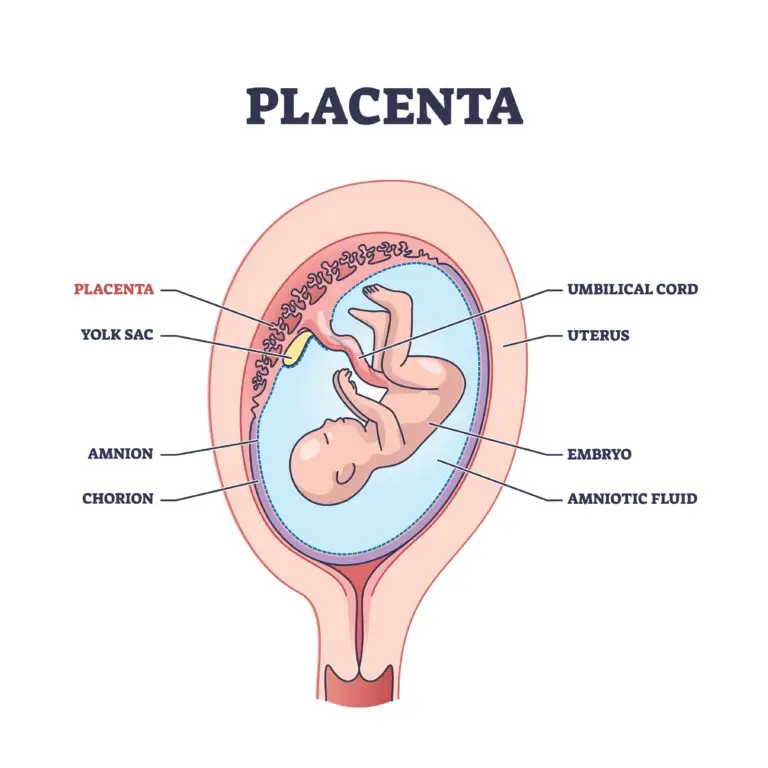Placenta

Table of Contents
What is a Placenta?
The placenta is an essential and temporary organ that develops during pregnancy and plays a crucial role in supporting the growth and development of the fetus.
It forms inside the uterus and facilitates the exchange of nutrients, gases, and waste products between the maternal and fetal circulatory systems. The placenta is vital for providing oxygen and nutrients to the developing fetus and as a barrier against harmful substances.
Functions of the Placenta
Development
The placenta develops during early pregnancy from both maternal and fetal tissues. It originates from the chorion, one of the outer membranes surrounding the embryo, and the uterine lining.
Attachment
The placenta attaches to the uterine wall, and it is connected to the fetus through the umbilical cord. This attachment allows for the exchange of substances between the maternal blood supply and the fetal blood vessels in the placenta.
Maternal-Fetal Exchange
The placenta acts as a bridge between the maternal and fetal circulatory systems but prevents direct mixing of blood. Substances, such as oxygen, nutrients (like glucose and amino acids), and antibodies, pass from the maternal blood into the fetal blood, while waste products, such as carbon dioxide and urea, move from the fetal blood to the maternal blood.
Hormone Production
The placenta produces hormones that are crucial for maintaining pregnancy and supporting fetal development. These hormones include human chorionic gonadotropin (hCG), progesterone, and estrogen.
Waste Elimination
Waste products produced by the developing fetus, such as carbon dioxide and urea, are transferred from the fetal blood to the maternal blood for elimination.
Growth and Development
The placenta provides the developing fetus with a continuous supply of nutrients and oxygen necessary for growth and development. It adapts to the changing needs of the growing fetus throughout pregnancy.
Oxygenation
Oxygen from the maternal blood diffuses through the placental barrier to the fetal blood, ensuring that the developing fetus receives an adequate supply of oxygen for cellular respiration.
Delivery of Nutrients
The placenta plays a central role in the transport of nutrients, ensuring that the developing fetus receives a sufficient supply of essential substances for its metabolic needs.
Placental Function Throughout Pregnancy
Early Pregnancy: In early pregnancy, the placenta begins to form and takes over the role of hormone production from the corpus luteum, supporting the maintenance of the uterine lining and preventing its breakdown.
Mid-Pregnancy: The placenta becomes fully functional, and its size and blood flow increase to accommodate the growing needs of the developing fetus.
Late Pregnancy: The placenta continues to adapt to the increasing demands of late pregnancy, providing essential support for the final stages of fetal growth and development.
Placental Delivery (After Birth)
After the baby is born, the placenta is expelled from the uterus during the third stage of labor. This process is known as placental delivery.
Related Links
Embryo
Embryology
Y Chromosome
Yolk